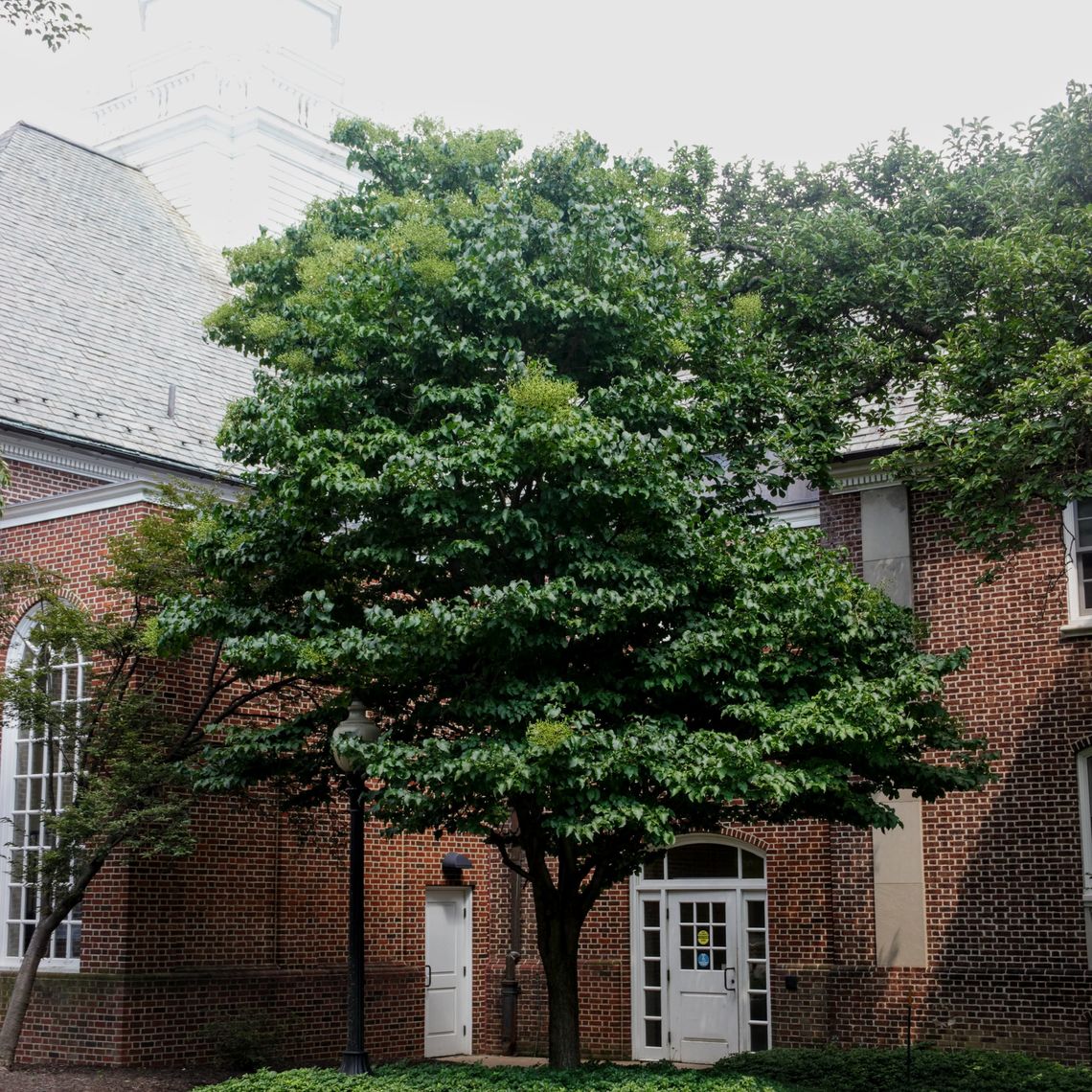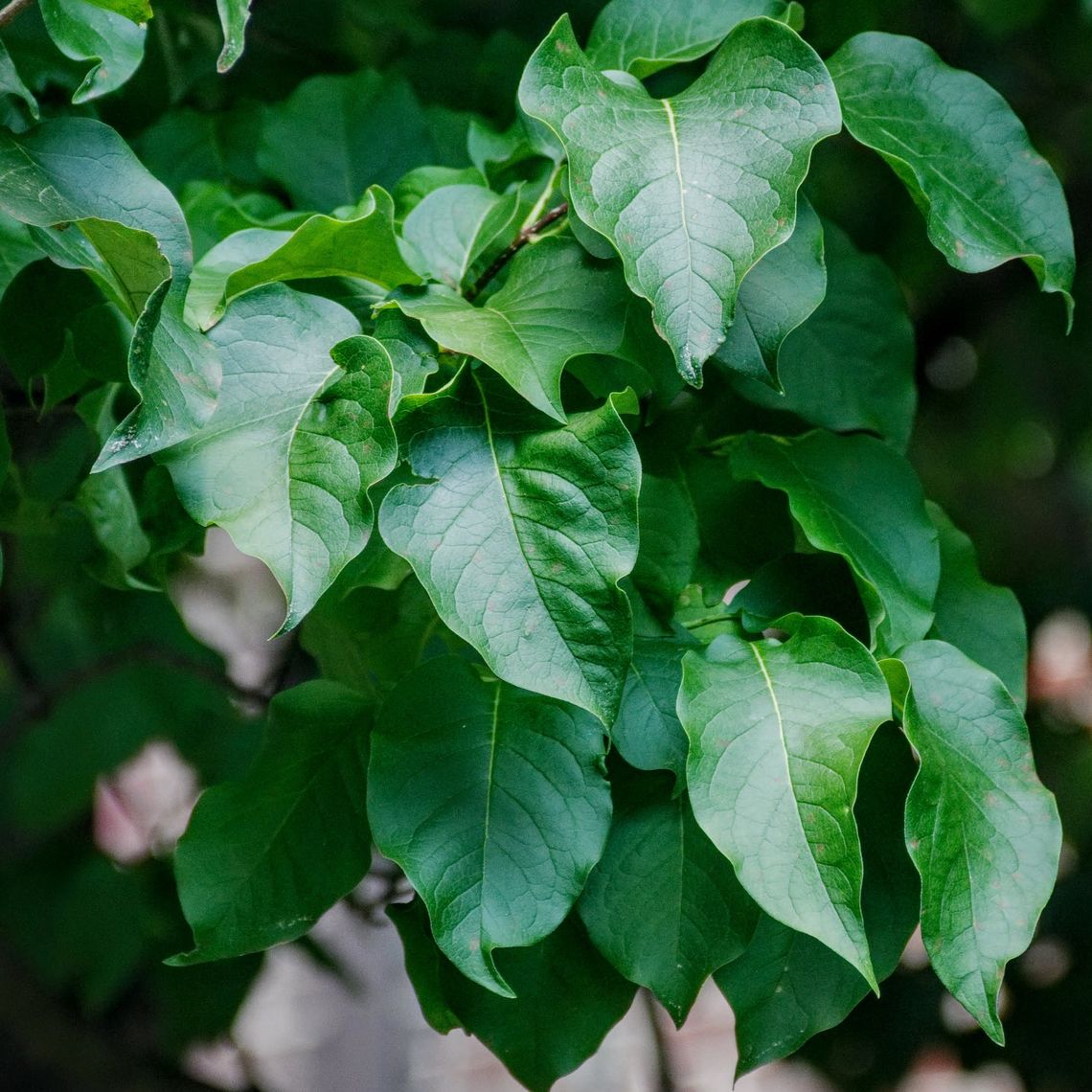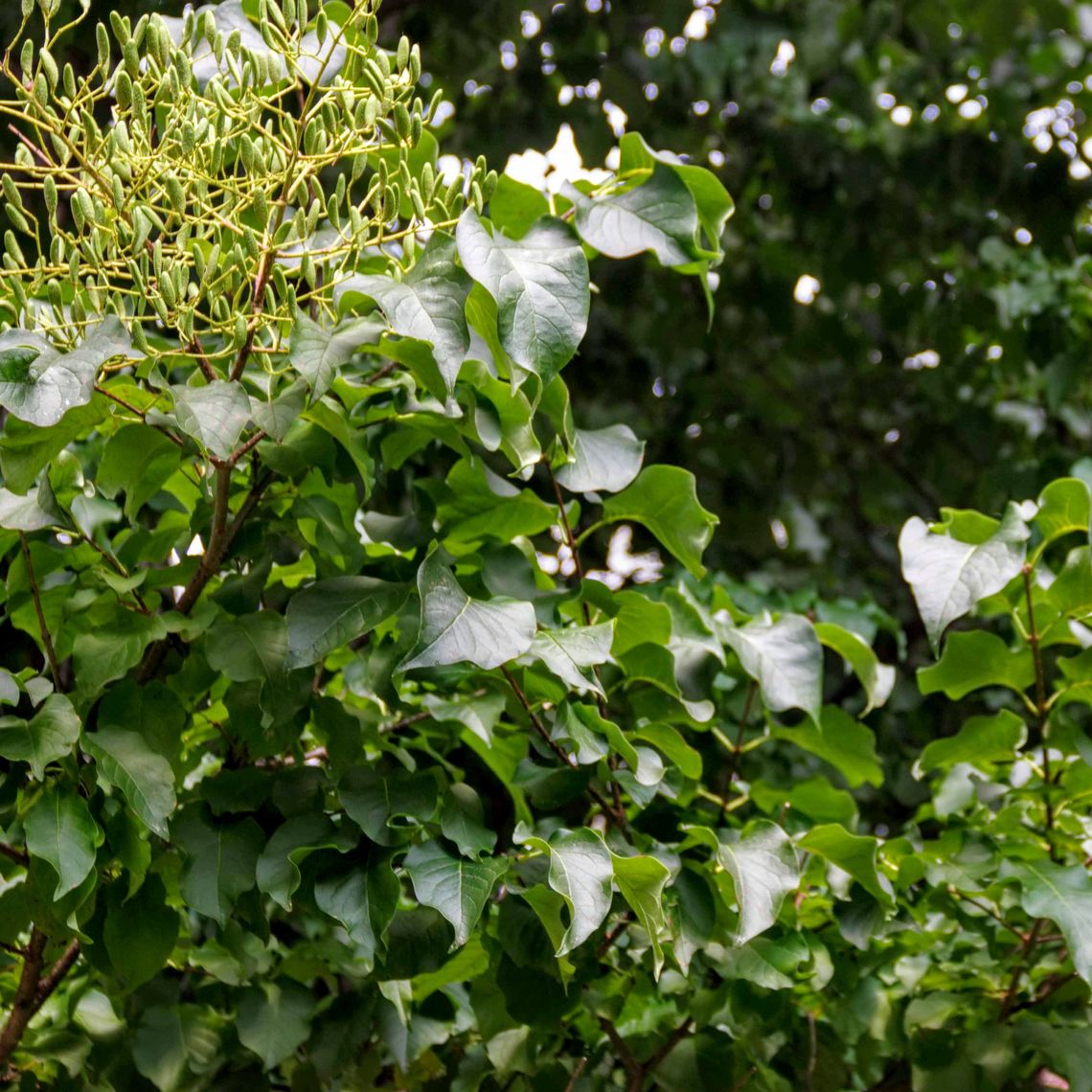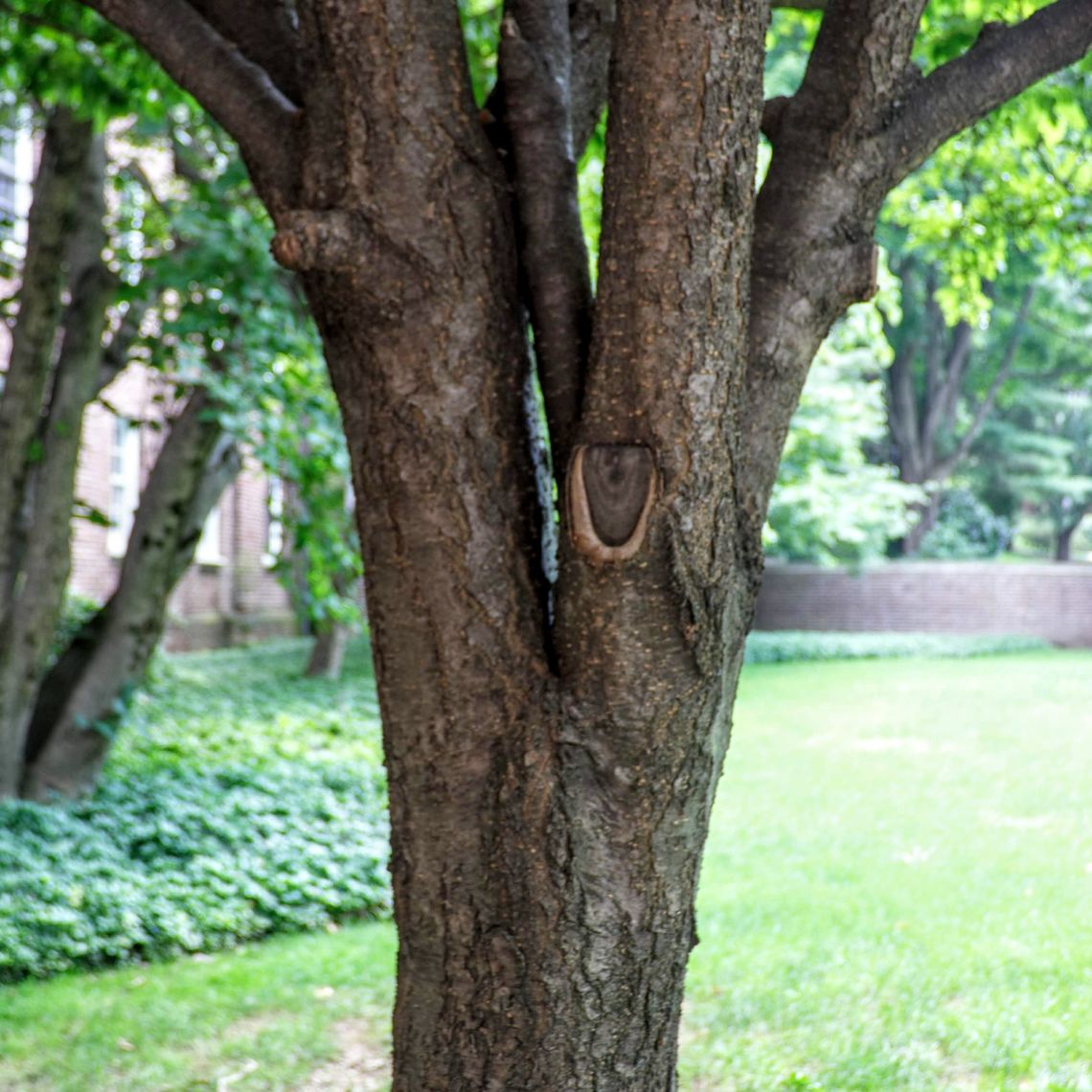Japanese Tree Lilac (Syringa reticulata)
The Japanese tree lilac can grow as a large shrub or a small tree. It is most noted for its fragrant, white flowers that appear in large upright clusters, blooming in May to June. The tree's bark is red-brown and marked with short horizontal lines, resembling the bark of a cherry tree. This tree attracts hummingbirds, butterflies, and other insect pollinators.
Family: Oleaceae (Olive)
Characteristics: The 2-inch to 5.5-inch-long leaves are ovate, sharply tipped, and dark green. Leaves do not change color in the fall. In May-June, white flowers in 6-inch to 12-inch-long upright panicles (loose branching clusters) begin to bloom. These flowers give way to clusters of brown capsules that persist into the winter. Bark is red-brown with horizontal lenticels. This tree can grow as a large shrub or small tree, with an oval to rounded shape. It grows 20-30 feet high and 15-25 feet wide.
Foliage: Deciduous (leaves lost seasonally)
Geographic Origin: Northern China (non-native)
Cultivation Notes: Requires low maintenance. Does best in full sun, though can tolerate light shade. Prefers slightly acidic, medium-moist, and well-drained soils. This tree needs good air circulation.
Number on Campus: 1
Sources: Dirr, Morton Arboretum, Missouri Botanical Garden




